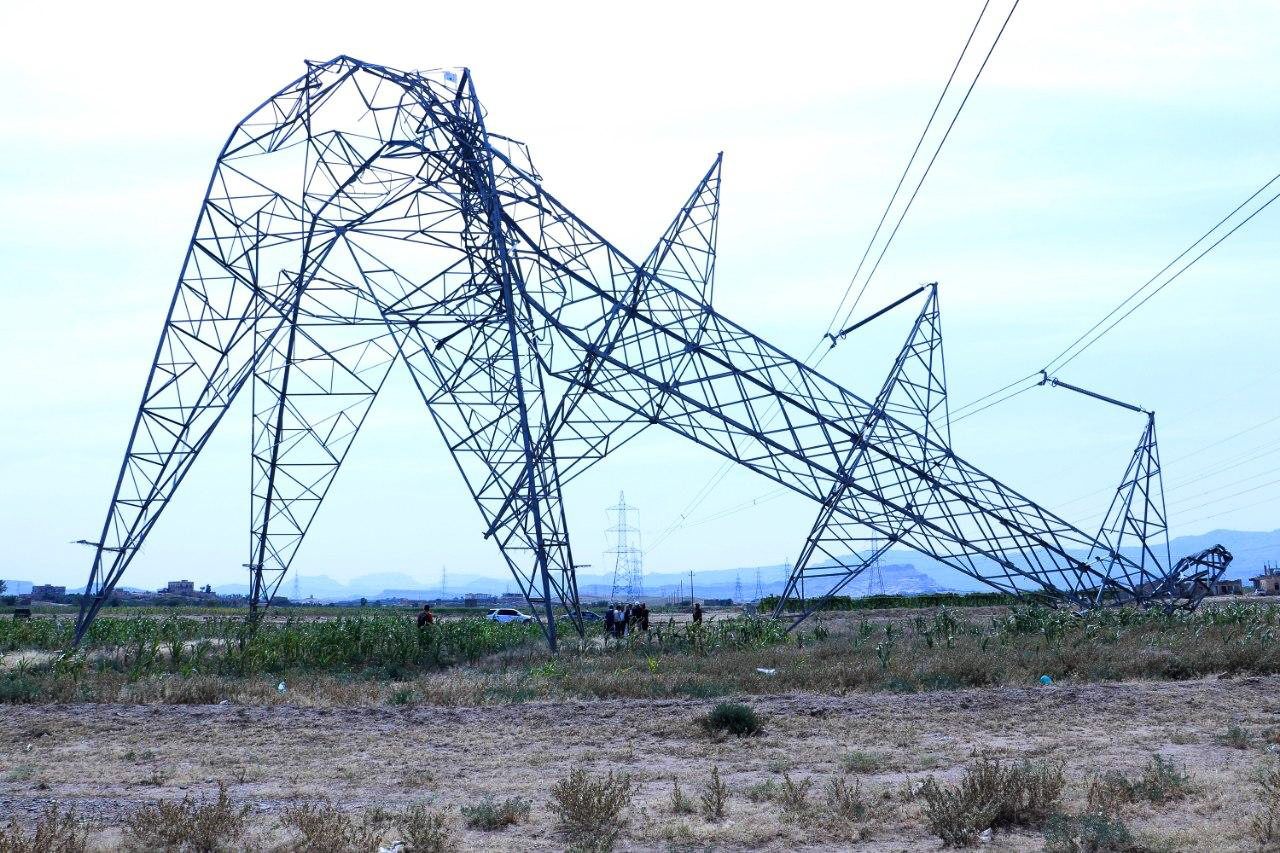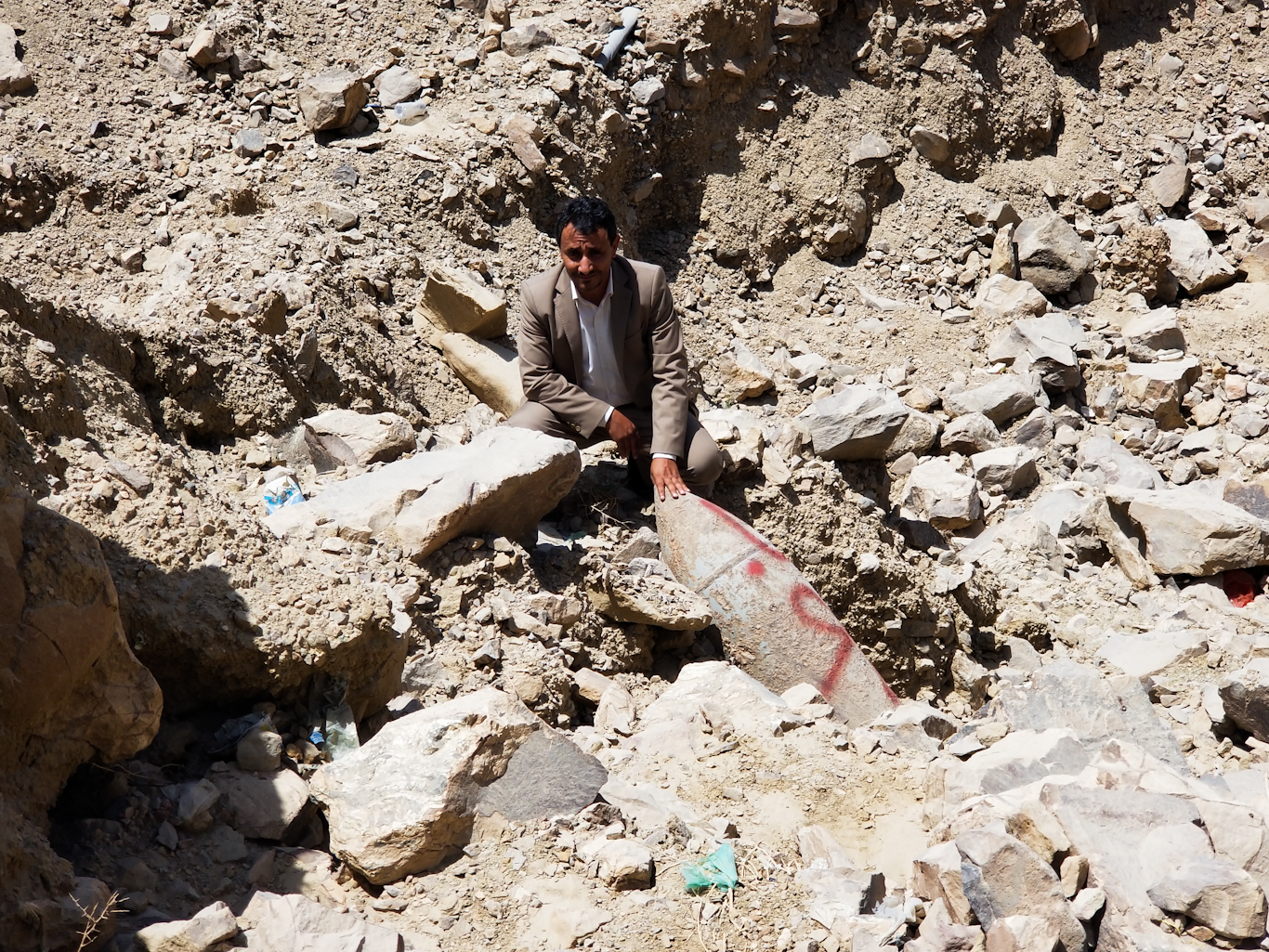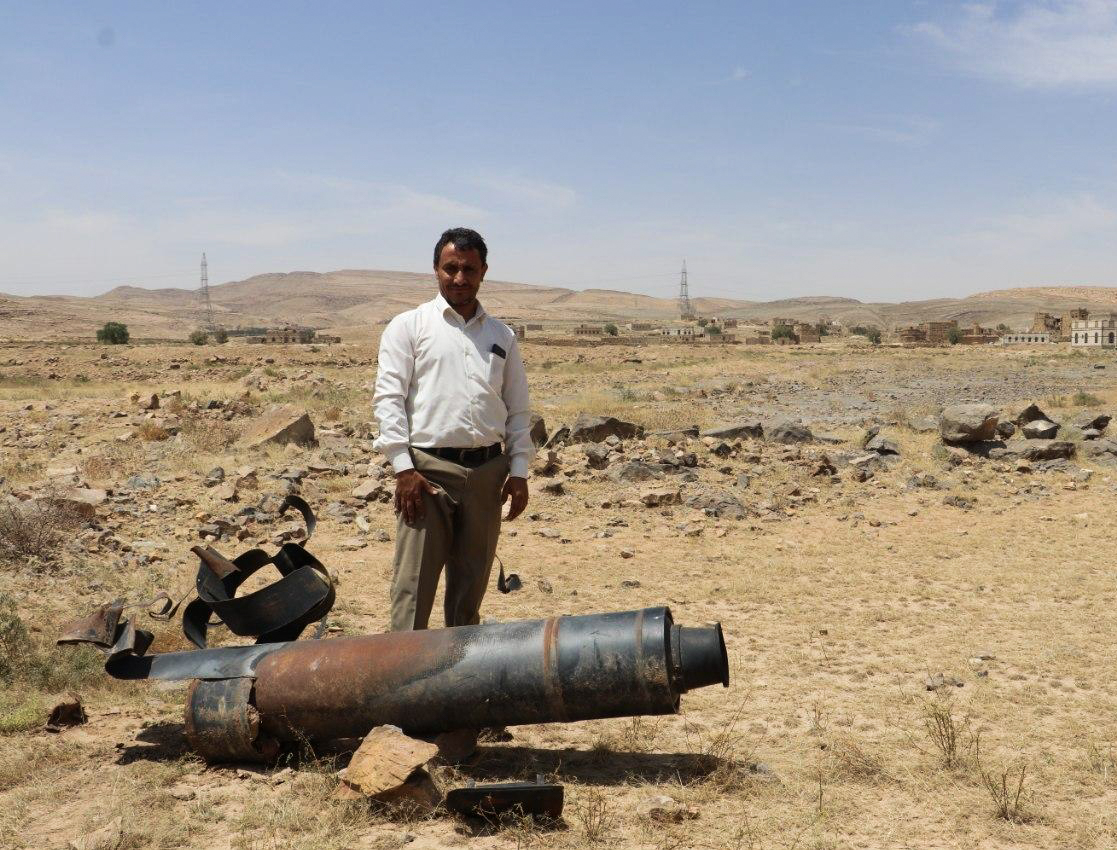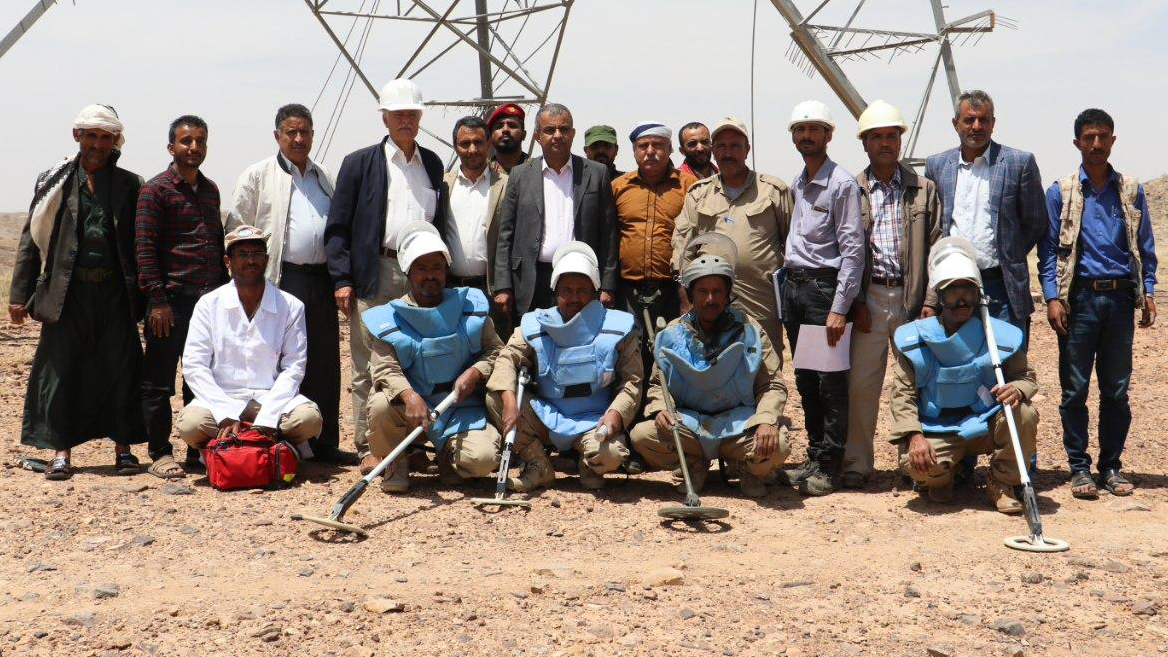Amid the scorching desert heat, Yemen’s southern provinces suffer frequent blackouts. An hour and a half of power followed by 12-hour outages are the norm, and can sometimes be fatal. Now, barely a week goes by without the citizens of the Southern District holding demonstrations until authorities relent and temporarily restore power until the next blackout, and, inevitably, the next protest.
Hundreds of angry Yemenis began taking to the streets nearly one month ago in the war-torn country’s largest governorate of al-Mukalla, gathering to protest the deterioration of public services and lengthy blackouts that regularly leave them without electricity. They set tires on fire and clashed with UAE-backed militants, who use live ammunition to disperse them. Shops closed as activists launched a campaign of civil disobedience against what they say is “systematic corruption and failure to provide basic public services, in particular the daily power outages.”
“The power cuts reach 8 hours in a day, sometimes reaching 24 hours.” Salah Ben Hamel, a member of the local council in al-Mukalla said. He accuses the UAE-backed authorities of ignoring the suffering of the residents. “We can not sleep because of the high heat” he added.
Just like in al-Mukalla, power outages have left many major cities in the dark since 2015, when the war began. Western weapons supplied to Saudi Arabia and coalition allies have destroyed transmission lines, power stations, and other facilities, and a near-total blockade forbids Yemenis from rebuilding, leaving critical services like health, water, and sanitation woefully underserved.
According to identical data from both Yemen’s Ministry of Electricity and non-governmental organizations, the Saudi-led Coalition has targeted more than 5,000 power stations and other pieces of critical energy infrastructure. Most of them far from any fighting or military site. Ninety percent of the total population now lives without electricity, especially those in remote and semi-urban areas.
On August 26, 2016, Amnesty International reported that U.S bombs dropped by Saudi warplanes destroyed two generating stations at Haradh and Midi in Hajjah province. Eight bombs also hit the main power station in Amran, destroying two transformers. On July 24, 2015, the Saudi Coalition bombed a compound housing employees of a power plant and their families, killing and injuring more than 300. On April 13, 2016, Saudi warplanes destroyed the main power station in Taiz province. According to Yemen’s Public Electricity Corporation, the financial damage from these deliberate attacks on infrastructure amounts to over four billion U.S. dollars.
Attacks on the grid run deep
The effects of those attacks run much deeper though. Socially, the collapse of the country’s electric grid has limited children’s ability to study in the evenings and has forced some families to pull their children out of school entirely to fetch water, as electric pumps are no longer operational. Water pumping stations have been closed, forcing people, particularly women and children, to carry water needed for daily use on their heads for long distances.
Economically, the lack of electricity has led to the deterioration of Yemen’s already faltering local economy. Small industrial facilities that survived the war have been shuttered due to the lack of electricity and manufacturing has all but halted.

Hygienically, public health services have worsened significantly as long-lasting power outages have become all too regular in often partially functioning health facilities. The outages are also contributing to the spread of COVID-19 and other epidemics as electricity is required to pump clean water, forcing some to drink surface water contaminated with Cholera and other bacteria.
Throughout its war against Yemen, Saudi Arabia’s strategy has sought to break down and weaken the state to make a recovery impossible for at least the next twenty years. Systematic destruction makes the country more dependent on “helping hands” after the war.
The Saudi blockade, in particular, prevents the entry of fuel and has impacted electricity production as residents are forced to pay a monthly subscription fee of 1,200 YER to private sector producers, even when they are not consuming electricity. When fuel shortages become particularly acute, that price increases to 350-400 YER per kilowatt, before the war it was just seven YER per kilowatt.
Sabotaging the Electric Grid
“Electric stations, transmission lines, and towers have all been targeted by U.S bombs and cluster munitions,” the Minister of Electricity and Energy, Ateq Hussein Abbar, told MintPress as he stood in shock near a destroyed electricity tower in Baran. “Just as bad,” he said, “tons of improvised explosive devices, landmines, and countermines have been planted by the coalition forces and their mercenaries under the towers and lines.”

The sheer scale of the Saudi campaign, which often sees hundreds of separate airstrikes carried out every day, coupled with its indiscriminate nature, has not only left Yemen one of the most heavily contaminated countries in the world but turned the large areas through which power lines pass or where electric poles are located into fields full of mines and unexploded bombs.
“We have 490 electric towers in the Sanaa-Marib line that passes through Nehm, most of which are now destroyed or affected by the raids, shelling, and unexploded ordnance.” Abdul Qadir Mutahar, Director-General of Transportation at the Electricity Corporation said.
“The dense amount of mines and unexploded ordnance that are now spread near electric transmission lines is huge. It will take a long time before teams are able to reach them to start the rebuilding process,” the head of the UN-backed Yemeni Executive Mine Action Center (YEMAC) said.
Even if the infrastructure was in place to begin repairs to the grid, removing unexploded remnants, IEDs and landmines would require an end to the U.S.-backed war and economic blockade as special equipment and machines, such as armored excavators, would need to be brought in, a slim prospect in a country unable to secure even the basic staples of life.
All eyes on Marib Power Station
Despite the danger, some electrical engineering teams have forged on. Two weeks ago, engineers in cooperation with mine clearance teams began to assess the extent of damage in the Nihm area, a move aimed at rehabilitating the Sanaa-Safer line. They hope the lines can be ready when the Marib power station is back up and running. In March 2015, the country’s largest power plant in Marib, responsible for powering most of the country, went offline and represented a turning point for the country’s electricity sector.

Local tribes supported by Ansar Allah (Houthis) have been advancing in oil-rich Marib, which lies adjacent to the capital of Sana’a. Over sixty percent of the province has been captured by the Houthis in fierce fighting pitting the outgunned group against Saudi Arabia, the UAE, and fighters from al-Qaeda in the Arabian Penninsula and the so-called Islamic State.
The Houthi advance has attracted the attention of world powers, including the United States, the UK, and even the UN. Negotiations over prisoner exchanges have been activated, but all the renewed attention is focused on stopping the Houthi advance in Marib, the last stronghold of the coalition in the north of the country, and not on ending the war.
Taqi al-Din Al-Mutaa, the undersecretary of the Ministry of Electricity, said that “Simply liberating Marib means restoring electricity to all Yemeni regions, means ending the suffering of people, ending employee suffering.” He confirmed that the ministry plans to start the Marib power station as soon as possible.
There are real fears that Saudi Arabia could strike the Marib power station and regional oil facilities should the Houthis advance succeed. High-ranking officials in Sana’a told MintPress that any such attack would be met with retaliatory attacks on “the most important electrical and oil facilities in Saudi Arabia” “There will be not only thick smoke rising in the sky of Marib,” one military official promised, “there will be smoke rising in the skies of the Arabian Peninsula.”
Yemenis look to the sun
There are glimpses of light in the darkness, particularly in Yemen’s northern provinces. In Sana`a, rooftops are now dotted with solar panels. The private sector has stepped in as the most competitive source of electricity in the country, importing cheap solar photovoltaic systems.
Small electronic retailers now sell solar home systems, encouraged by surging demand and supported by the local Ansar Allah government, who recently announced that investment in alternative energy would be 100% tax-exempt.
The World Bank has praised the boom in the usage of solar energy in Yemen and urged countries suffering from wars and crises to emulate the Yemeni experience. Yemen is naturally endowed with huge solar potential. It has interior high mountains, upland desert, and long semi-desert coastal plain across the Red Sea and the Arabian Sea. Moreover, the country is characterized by hot and clear weather. Temperatures are generally very high, particularly in the coastal and desert areas. Geographically, Yemen is located in the world’s Sunbelt.
The important question for many Yemenis is whether Saudi Arabia will allow them to capitalize on this wealth.
Feature photo | A team of engineers and mine sweepers poses for a photo on the Sanaa-Safer line. Ahmed Abdul Kareem | MintPress News
Ahmed AbdulKareem is a Yemeni journalist. He covers the war in Yemen for MintPress News as well as local Yemeni media.


